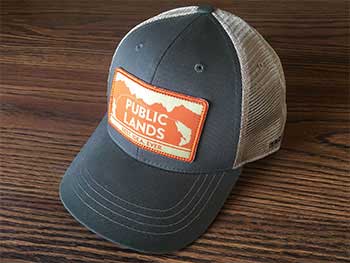Where
Ninemile Valley is 20 miles west of Missoula, in west central Montana. The valley bottom consists mostly of private property; the upper lands are part of the Lolo National Forest. Ninemile Creek is a major tributary of the Clark Fork, Montana’s largest river.
Ninemile Valley
Why
At more than 2 million acres, the Lolo National Forest offers a plethora of hunting and fishing opportunities, including a well-preserved slice of old Montana with great potential as a fishery.
“Ninemile Creek used to generate so many trout, people referred to it as a fish factory,” said Paul Parson, Trout Unlimited’s Middle Clark Fork Restoration Coordinator. “Runoff from mines in the area has impaired the watershed, but they’re getting cleaned up, and we’re seeing a great comeback. In the upper reaches, it’s brook trout and cutthroat, all pretty gullible; in the lower few miles where the creek ties into the Clark Fork, you’ll find some big rainbows—especially in the early season.”
Fishing should continue to improve, but in the interim, Ninemile has other appeals.
“There’s a neat, old-fashioned ranger station in the valley that also serves as a working ranch,” Parson continued. “It’s the winter home for all the pack animals that are used by Forest Service employees to get into the backcountry. It’s old school forest service—they even do some blacksmithing to shoe the horses. If you’re game to bag a peak, consider the hike to Sleeping Woman Summit. From there you can see to the Mission Mountains, Glacier National Park and Idaho. In the summer, the huckleberries are off the chart.”
There’s a chance to encounter wolves in the valley, as well as black bears; grizzly will pass through as well.
Ninemile Creek used to generate so many trout, people referred to it as a fish factory. Runoff from mines in the area has impaired the watershed, but they’re getting cleaned up, and we’re seeing a great comeback.
Paul ParsonTU Initiatives
Placer mining and dragline dredging considerably compromised Ninemile Creek, resulting in channelization, large piles of dredging material and the diversion of many feeder streams into dredge ponds. Through the Clark Fork Restoration Program, TU, in cooperation with the U.S. Forest Service and state agencies has been restoring the creek, rehabilitating stream, floodplain, and hillslope processes impaired by previous placer mining operations and restoring aquatic habitat conditions that support all life stages of native fish. To date, 11 mine reclamation projects have been completed. Trout are now freely moving between Ninemile Creek and the upper reaches of Mattie V and Twin Creeks for the first time in 70 years.
Support public lands and look good doing it!

Make a Difference
A dollar spent on conservation is a dollar spent for the benefit of future generations. And with recent budget proposals, those dollars and the programs they support are in jeopardy. Visit standup.tu.org to send a message to Congress that you support funding for conservation programs that support public lands the Lolo National Forest.

